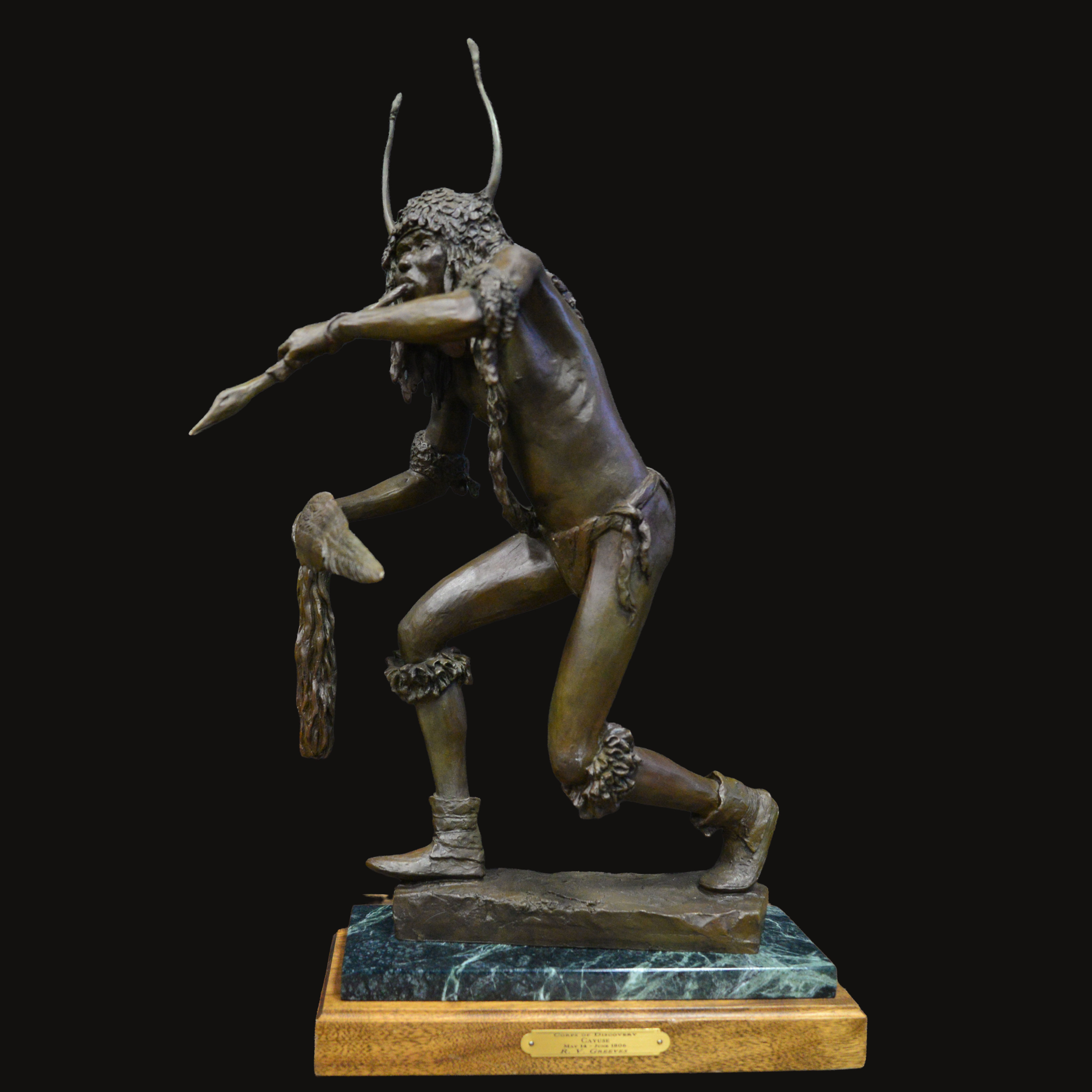Every movement is myth—every gesture, a language older than maps.
Richard Vernon Greeves
Contemporary

“Cayuse – May 14-June 1806” by Richard Vernon Greeves is a dynamic bronze sculpture that channels the sacred energy of ceremonial transformation. Caught mid-motion, the figure crouches in a low stance—draped in fur, wielding a staff, and crowned with horned headdress. It’s not a war pose; it’s ritual. It's not imitation of an animal—it’s embodiment of spirit.
The Cayuse, a powerful Plateau tribe, were known for their horsemanship and their complex relationship with the Lewis and Clark expedition during the final leg of its return. This sculpture captures something beyond diplomacy or record—it speaks to cosmology, performance, and cultural embodiment through dance.
Greeves uses every limb to tell the story. The tension in the knees, the twist of the torso, the rhythm frozen in bronze—each element contributes to a portrayal of sacred storytelling through movement. The work honors not just what was seen by explorers, but what they could never fully understand.
This piece is ideal for collectors and institutions centered on Indigenous performance, animistic tradition, and kinetic sculpture that resonates with both movement and meaning.